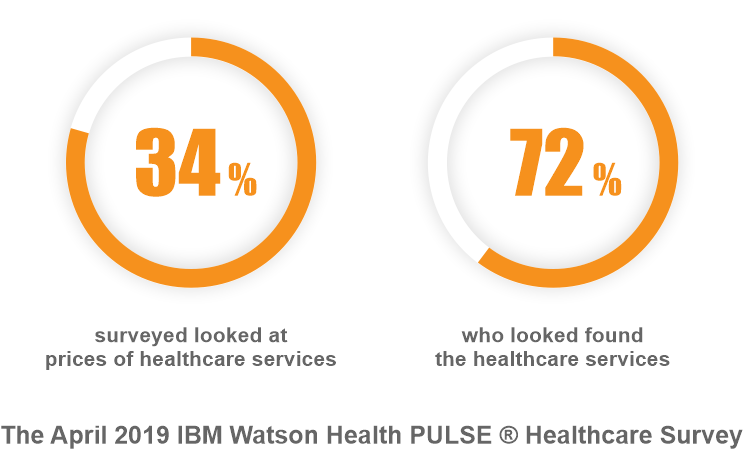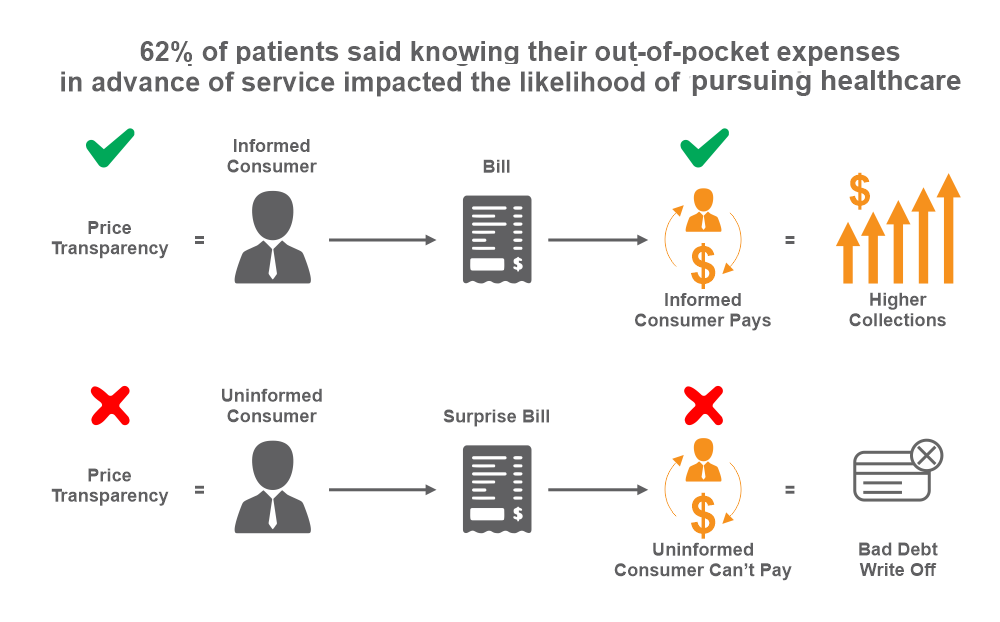We’ve all heard the stories or know somebody who was impacted. It may even be you. Somebody needed medical care and they looked for the best physician they could find. The procedure was performed and the bill was submitted to the insurance carrier; unfortunately, the resulting patient bill left them in shock. A routine procedure has now potentially left the patient in debt.
How did this happen? Why did this procedure cost so much? In short, the issue comes down to price transparency and the lack of it throughout the healthcare spectrum. But the good news is -- times are changing.
Effective January 1, 2021, the Price Transparency Rule was enacted, requiring all hospitals that operate within the United States to post a complete list of their standard charges for services provided. Not only must they have a clear list of prices, but they must host it in a consumer-friendly format so the public can easily access it via the web. In some states, this has already been the case, but now it’s hitting the mainstream.
The purpose of this rule is to ultimately drive down the rising costs of healthcare and help the consumer make better informed decisions, based upon more than just the location of the procedure. The end goal is to make healthcare fundamentally more affordable for all patients.
As a sign of the change, Centers for Medicare & Medicaid Services (CMS) began auditing hospital websites when the rule went into effect. For those hospitals that are marked as 'noncompliant' by CMS based on the requirements of the Rule, there are actions that take place including the following:
- First Offense: Written notice or inquiry to the hospital from CMS
- Second Offense: CMS will deliver a second notice or request a corrective action plan from the hospital
- Third Offense: A civil monetary penalty that will be publicly posted and listed on CMS’ website and an additional penalty of up to $300 a day
Currently, consumer awareness regarding price transparency is low. In fact, a recent survey discovered that only 9% of adults know that hospitals are required to post full procedure and treatment charges on their website (KFF Health Tracking Poll, May 2021). With a lack of consumer knowledge and hospitals delaying the inevitable, now is the time to take action.
The Secret to Achieving Price Transparency is Through Technology
Businesses today, especially in healthcare, have been focusing on Artificial Intelligence (AI) and Robotic Process Automation (RPA) to streamline operations, which not only improve business workflows, but help organizations make informed decisions. Incorporating these cutting-edge technological advances into health organization cannot only help streamline price transparency processes, but can help drive down expenses and attract those who matter most to your business, the consumer.
A recent survey indicated that in the past year, only 34% of consumers searched for prices of healthcare services before having a procedure performed. Of those respondents, only 72% of the patients found the information they needed (The April IBM Watson Health PULSE Healthcare Survey).

With automation, the delivery of pricing information for all services through specific AI-driven tools will significantly improve consumer awareness while ultimately reducing costs across the care continuum. With over 50% of the allowable being pushed to the patient in the early part of the year, it makes it four times more difficult to collect payment from the patient. If the patient knows the price prior to the date of service, they will be able prepare accordingly ahead of time, streamlining the front-end process significantly and increasing patient revenue (MGMA, Rivet Webinar).
When reviewing expenses in relation to patient care, studies show that 62% of patients said that knowing their out-of-pocket expenses in advance of services impacted the likelihood of pursuing care (MGMA, Rivet Webinar). This shows that patients would be far less likely to reschedule or cancel an appointment because they know what their liability is upfront, resulting in increased revenue and reduced bad debt. This is a win/win for both the provider and the patient, increasing patient satisfaction and providing lasting effects on organizational success.

Modernizing Processes with Vee Healthtek
In the age of consumerism, organizations who lead with digital transformation will thrive where others struggle. With access to big data and insightful analytics, a revolution in information technology has emerged. By modernizing operational processes, incorporating cutting-edge technologies, and streamlining the human resource capital currently in place, organizations will be able to lower expenses and standardize their consumer pricing data.
During this transition, Vee Healthtek can help navigate your organization through the price transparency landscape. By leveraging our advanced technology-enabled solutions and cutting-edge process improvement strategies, organizations can embrace digital transformation and be on the forefront of evolution. Be a leader in a time of change; patients will take notice and thank you for it.
References:
(KFF Health Tracking Poll, May 2021) https://www.healthsystemtracker.org/brief/few-adults-are-aware-of-hospital-price-transparency-requirements/
(The April IBM Watson Health PULSE Healthcare Survey) https://www.ibm.com/downloads/cas/QAVORWKZ
(MGMA, Rivet Webinar) Watch: Delivering an upfront patient experience (rivethealth.com)
